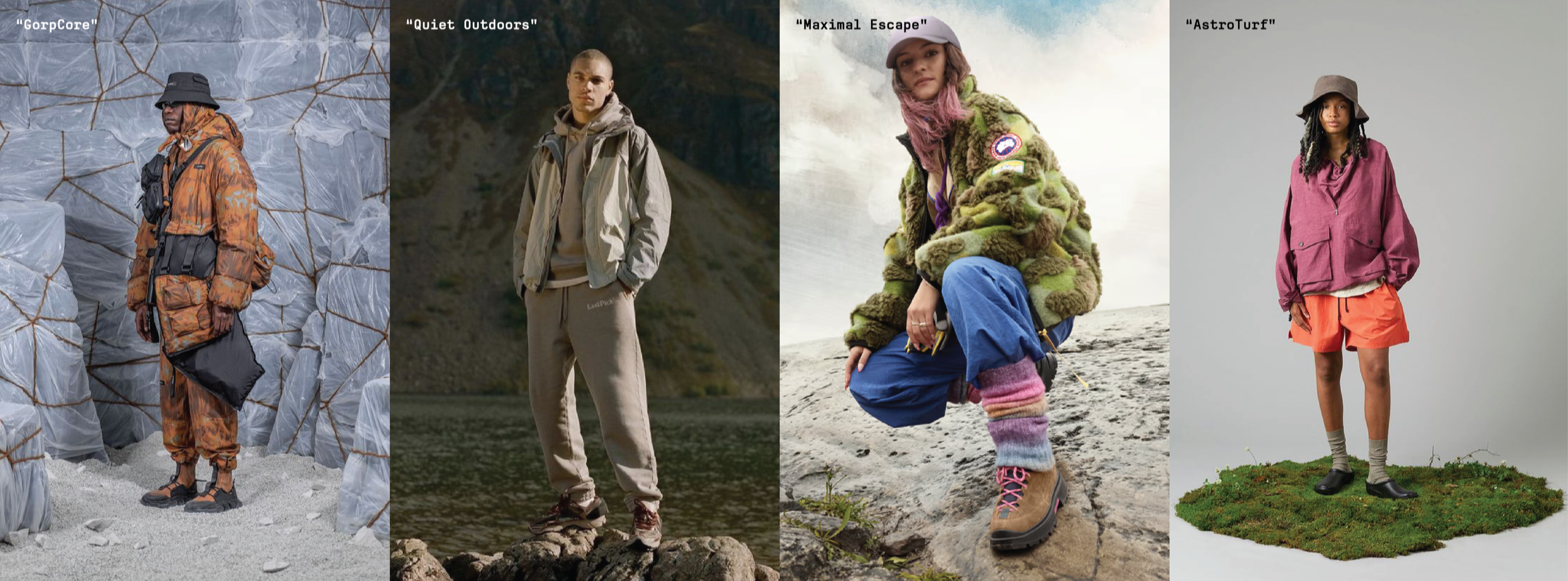Issue 016:
Fresh Perspective
Start it now, figure it out later. That’s one of our core philosophies as we build the YONDER-VERSE. We don’t sit around waiting for something interesting to happen — we move. We participate, often with a little naivety, and learn (sometimes the hard way) how much we don’t actually know. But that’s the point. We want people to see their challenges the way we do: as a playful, unpredictable game of growth and discovery.
Life is not a quick dash to success or happiness. It’s filled with hills and valleys, breakthroughs and setbacks, stretches of solitude, and moments of surprising clarity. The terrain is rarely smooth, and the path isn't always marked, but the journey itself is where transformation happens. We come face-to-face with our limits. Our mind will tell us to stop long before our body needs to. We’ll be tempted to compare ourself to others, question our progress, or doubt whether we can go on. But those moments of resistance are also where we find out what we're really made of.
Our former logo carried deep meaning — the ‘Y’ for Yonder, shaped like outstretched arms in gratitude for each new day; an open eye, symbolizing the mind’s eye; and a cross, representing our Christian values. It was bold, strong, and fixed — but maybe too fixed. The digital precision felt restrictive. What Yonder needed was more humanity. More lightness. More play. And a sense of perpetual growth and discovery that all runner’s experience.
Analog + Visceral + Raw + Present
The more that we experimented, our brand voice began to emerge more clearly—fluid, vibrant, and unapologetically exploratory. It became a reflection of boundless creativity, a constantly evolving Yonder-verse filled with endless potential. Not tied to any one era or location, but rooted in the universal feeling of wonder—the kind that strikes when you gaze out at a breathtaking horizon and feel part of something bigger.
Leading Versus Following Trends
Within the industry, there are entire teams and careers built around understanding where culture is headed. These professionals immerse themselves in the evolving landscape — attending global expos, niche pop-ups, underground gatherings, and hyper-local events. Their role is to spot patterns, listen deeply, and sense shifts in mood, taste, and motivation before they become obvious. Some trends emerge organically from the streets or subcultures and eventually go mainstream; others remain intentionally niche, shaping the tastes of a smaller but highly engaged audience. Both types of trends matter. Essentials define the status quo. Acquired tastes challenge it — and often pave the way for what comes next.
For large, established brands, mass appeal is essential. Their scale demands it. To grow, they must resonate with as many people as possible — often relying on familiarity, consistency, and broad messaging. But none of them started that way. Every major brand began with a point of view — something specific, different, and often a little polarizing. That specificity is what made them memorable. For smaller or emerging brands, cultivating a niche is not just a strategy — it’s survival. Standing out requires a clear voice, a strong aesthetic, and a willingness to take risks.
Of course, the risk is real. Rejecting norms or stepping outside of consumer comfort zones can lead to lower sales, slower traction, or confusion. But the reward? Discovering an unspoken desire. Tapping into a collective feeling that hasn’t yet found expression. Becoming the brand that speaks directly to a subset of people who are tired of blending in — who want to be part of something new, meaningful, and alive. That’s where cult followings begin. That’s where cultural relevance is born — not by chasing the mainstream, but by creating something so true to your values that others can’t help but pay attention.
-CB


